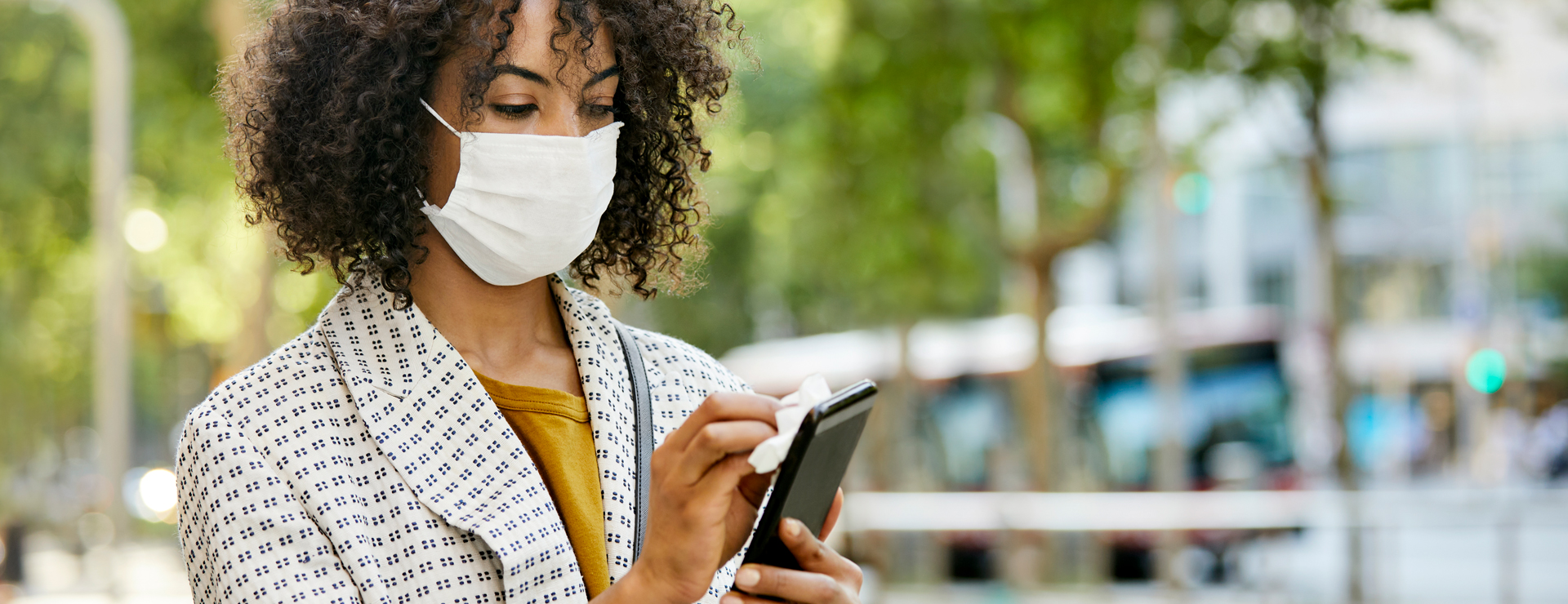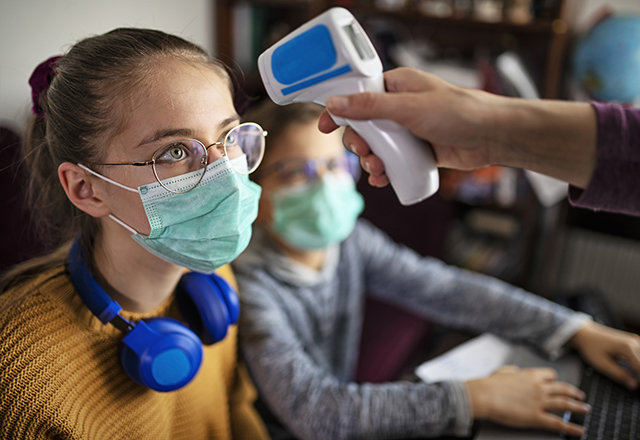Get Back to Health Safely
Welcome back!
If you have not been to one of our care facilities for a while, you will notice a few changes since your last visit. Please review this page to learn about the extra safety measures we have in place and the steps we ask you to take so we can more safely care for our patients and monitor COVID-19 in our communities.
Schedule an Appointment
Masking FAQs (posted May 18, 2022)
There is an increase of COVID-19 infections from the newest omicron variants, which are highly contagious. As such, masking remains a requirement for all patients, visitors and Johns Hopkins Medicine personnel regardless of vaccination status in all Johns Hopkins Medicine locations, both in clinical and in nonclinical areas.
Because some patients, visitors and even staff members may challenge the need to wear a mask when many social/public settings no longer require them, the following may help to explain why masks are still required in health care settings.
I don’t have to wear a mask in stores, public events, airplanes or government buildings. Why are you requiring me to wear a mask in Johns Hopkins locations?
- The rates of COVID-19 infection are increasing, and hospitalization rates are rising. Some people are becoming very sick, including some who were both vaccinated and boosted.
- Many of our patients and visitors and some of our staff members, including doctors and nurses, have weak immune systems. Having everyone wear a mask provides real protection for everyone.
- There are serious long-term health problems in a substantial proportion of people who develop COVID-19 infection. It is important to minimize the chance of infection in all settings, but particularly in health care settings.
- Our doctors, nurses and other health care personnel are working around the clock to provide high-quality care, and we need to minimize their risk of becoming infected so they can continue to care for all patients who come to our hospitals and other clinical locations.
- We will remove our masking requirements as soon as it safe to do so.
- (For patients) If you have additional questions, please discuss them with your medical provider.
Who must wear a mask?
- All Johns Hopkins Medicine employees, students and other personnel, including vendors and contractors, as well as patients and visitors, must wear a mask in Johns Hopkins Medicine facilities.
- This means that patients and care partners arriving for in-person appointments and procedures must be properly masked.
In what areas must I wear a mask?
- You must keep your mask on in all JHM locations, both in clinical and in nonclinical areas.
What if I do not want to wear a mask?
- You will not be able to enter the building until you wear a mask. You will not be seen by any of our health care personnel, including your doctors and nurses, unless you wear a mask. (Note: There are rare exceptions that can be granted by a medical provider if a patient’s medical condition prevents him/her from safely wearing a mask.)
- If you are in the building and remove your mask, a manager will be contacted to help explain the requirement.
- If you decline to wear a mask, you will be asked to leave.

-
We continually review our safety steps as we monitor COVID-19 in our area. We encourage you to arrive early to allow extra time for some of our new guidelines.
Here is what we require of all patients, visitors and staff, even if fully vaccinated and boosted against COVID-19:
Wear a face mask at all times.
Masks are required for everyone age 2 and up when you are inside our care facilities, even if you are fully vaccinated and boosted against COVID-19. A mask will be provided for you if you need one.
The following face coverings are not allowed: bandanas, gaiters, masks with exhalation valves, or clear shield-like face masks.Our staff members may wear additional personal protective equipment, depending on the care they are providing.
Practice physical distancing of at least 6 feet.
We have measures in place throughout our care facilities to allow physical distancing, except when you are getting medical care.
Wash hands or use hand sanitizer frequently.
You will find hand sanitizer stations throughout our care facilities, including at the building entrance and in clinical care areas. Your practitioners will sanitize their hands before and after caring for you.
-
When you schedule an appointment, procedure or surgery, you will be told whether you need to have a COVID-19 test. If you are uncertain, please be sure to ask.
Unless you show signs of COVID-19, in general, a COVID-19 test is not needed for:
- Regular office visits
- Procedures and surgeries performed at our care settings outside of hospitals (ambulatory surgery centers)
COVID-19 tests are required for those with a prescheduled hospital admission or a 23-hour observation following the procedure or surgery.
We are continually reviewing our COVID-19 testing requirements, including the role of vaccination, and will make further adjustments as it is safe to do so.
-
Using MyChart, you can digitally check in seven days before your appointment. You can also call your practitioner’s office in advance to check in. We strongly suggest one of these methods so we spend more time on your care during your appointment.
-
As we reopen our in-person care, we are doing everything possible to ensure a safe and efficient visit for you. This includes using telemedicine or other communication to enhance your safety. Johns Hopkins Medicine is taking significant measures to reduce exposure to COVID-19; however, as in any community or public setting, an exposure risk remains. It is important that you recognize these matters before your care. When you check in for your appointment, we will ask you to sign an acknowledgement form.

